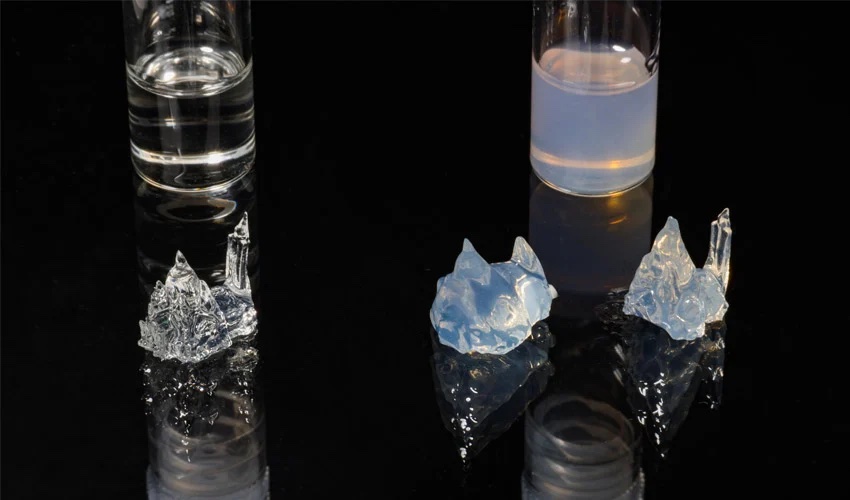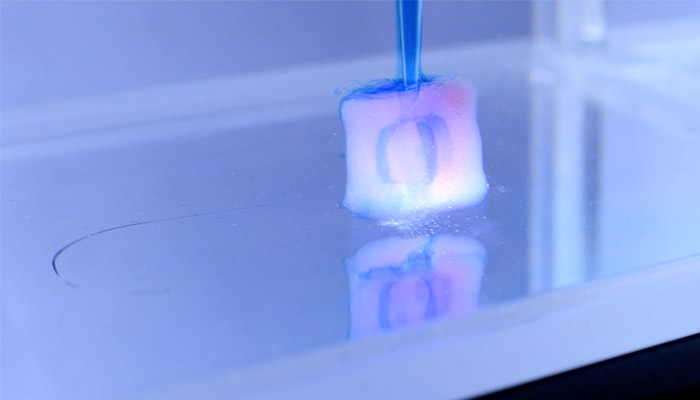Engineers Have Developed an Ultra-Fast Opaque Resin 3D Printing Process

At EPFL in Switzerland, engineers from the Laboratory of Applied Photonic Devices (LAPD) have developed a resin 3D printer capable of designing objects in a few seconds. Based on a volumetric printing technology, it can produce parts with an opaque resin, which until now was not possible with this type of method.
Innovations centering on resin processes are numerous and already 5 years ago, this team of engineers had developed a technology to considerably accelerate the printing process. Normally, it can take several hours to obtain a final part and many manufacturers are looking to optimize the speed of their machines. In this case, the engineers are relying on a volumetric method to do so. Christophe Moser, professor at EPFL, explained how it works: “We pour the resin into a container and spin it. Then we shine light on the container at different angles, causing the resin to solidify wherever the accumulated energy in the resin exceeds a given level. It’s a very precise method and can produce objects at the same resolution as existing 3D-printing techniques.”

Photo Credits: EPFL
In addition to obtaining a part with a good resolution, the process is considerably faster. In fact, the engineers tested their method and successfully printed a tiny Yoda in only 20 seconds. But what is particularly interesting is the material used: an opaque resin. The use of such a resin in a volumetric process poses a major challenge. Light does not propagate smoothly, which reduces the amount of energy needed to solidify the liquid resin. As a result, the resolution drops, which makes volumetric printing less attractive to many users. Engineers therefore sought a solution to circumvent this challenge and ensure that the light could pass through the resin in a straight line.
The first step was to study the trajectory of this light with a video camera. Then, they relied on computer calculations to compose the distortion of the rays. The 3D printer was next programmed to perform these calculations and correct the trajectory of the light during the printing process. The objective is to redirect the light to the desired locations to obtain enough energy to solidify the resin.

Little by little the resin is deposited in the object (photo credits: EPFL)
Engineers hope to use this technique in the medical field, particularly to design artificial arteries, as these procedures often require the use of opaque resin. The next steps will be to use several materials at the same time and to increase the resolution from a tenth of a millimeter to a micrometer. We will keep you informed about any upcoming developments in the project! In the meantime, you can find more information HERE.
What do you think of this opaque resin 3D printing method? Let us know in a comment below or on our Linkedin, Facebook, and Twitter pages! Don’t forget to sign up for our free weekly Newsletter here, the latest 3D printing news straight to your inbox! You can also find all our videos on our YouTube channel.






